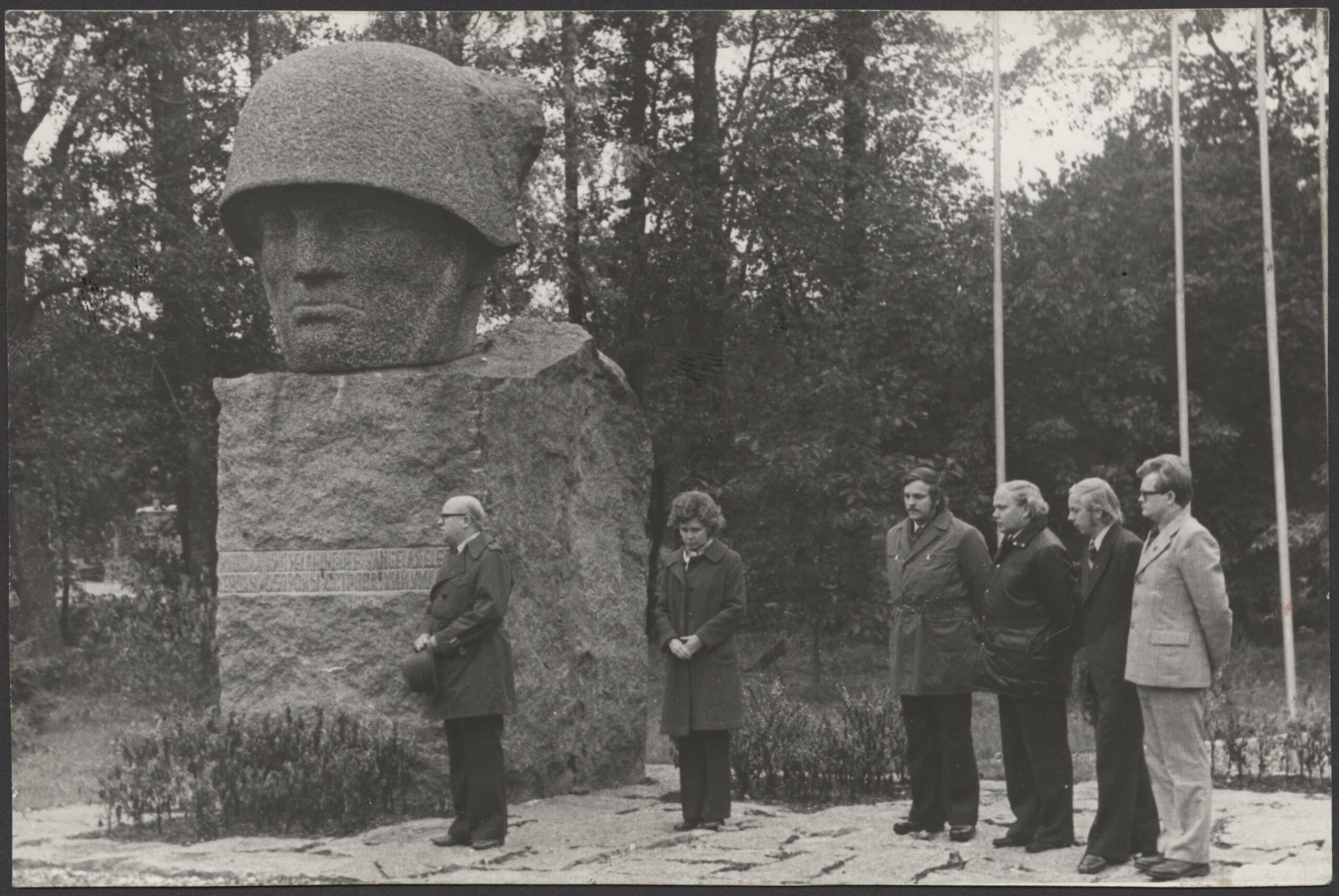Kärdla’s Kivi-Jüri (“Stone-George”)
Year of completion: 1966
Address: Hiiu County, Kärdla, Käina–Kõrgessaare–Heltermaa intersection
Author Endel Taniloo
Granite
Height 430 cm
Cultural monument no. 3394
At the edge of Kärdla roundabout stands the heaviest monument in Estonia – a five-ton soldier head on a granite foundation that weighs 35 tons. The piece was completed in 1966 for the 25th anniversary of the Defensive Battles of Hiiumaa – in 1941 combat between Russian and German forces took place in Hiiumaa. Hiiumaa, as a frontier, has numerous traces and marks of military action. Kivi-Jüri is the most visible of them, but the military background of the piece is not that widely known.
Endel Taniloo’s soldier head is known all over Hiiumaa, but not by its official name: on the island, he is known as Kivi-Jüri. Before the war, the plot on which the monument stands now belonged to a well-off man named Jüri Post. The monument was erected onto the Posts’ land in 1966, and soon enough the locals started calling the soldier Jüri after the old man. The monument, in turn, inspired the name of a guest house nearby, which has for decades now been a landmark, with which to guide guests from the mainland.
The soldier head erected onto a granite pedestal is wearing a Soviet Army helmet, which covers up most of the head but has a relatively generalized design – a person unfamiliar with military headgear might not recognize, which army the stone soldier is representing. The background of the stern-faced soldier is explained by the engraved text in Estonian and Russian on the granite pedestal: “For the heroes of the Defensive Battles of Hiiumaa 1941”. Because the statue is a war monument erected by an occupying power, some speculation arose in Hiiumaa in the early 2000s about whether or not the piece should stand beside Kärdla’s priority road. However, Taniloo’s stone soldier is stylised so much so, that not even the locals associate the soldier head with the Defensive Battles of Hiiumaa, but have instead made the stern soldier “their boy”. For one, Kärdla’s school graduates have had a tradition of washing Kivi-Jüri’s head in the spring.
Mia Maria Rohumaa








